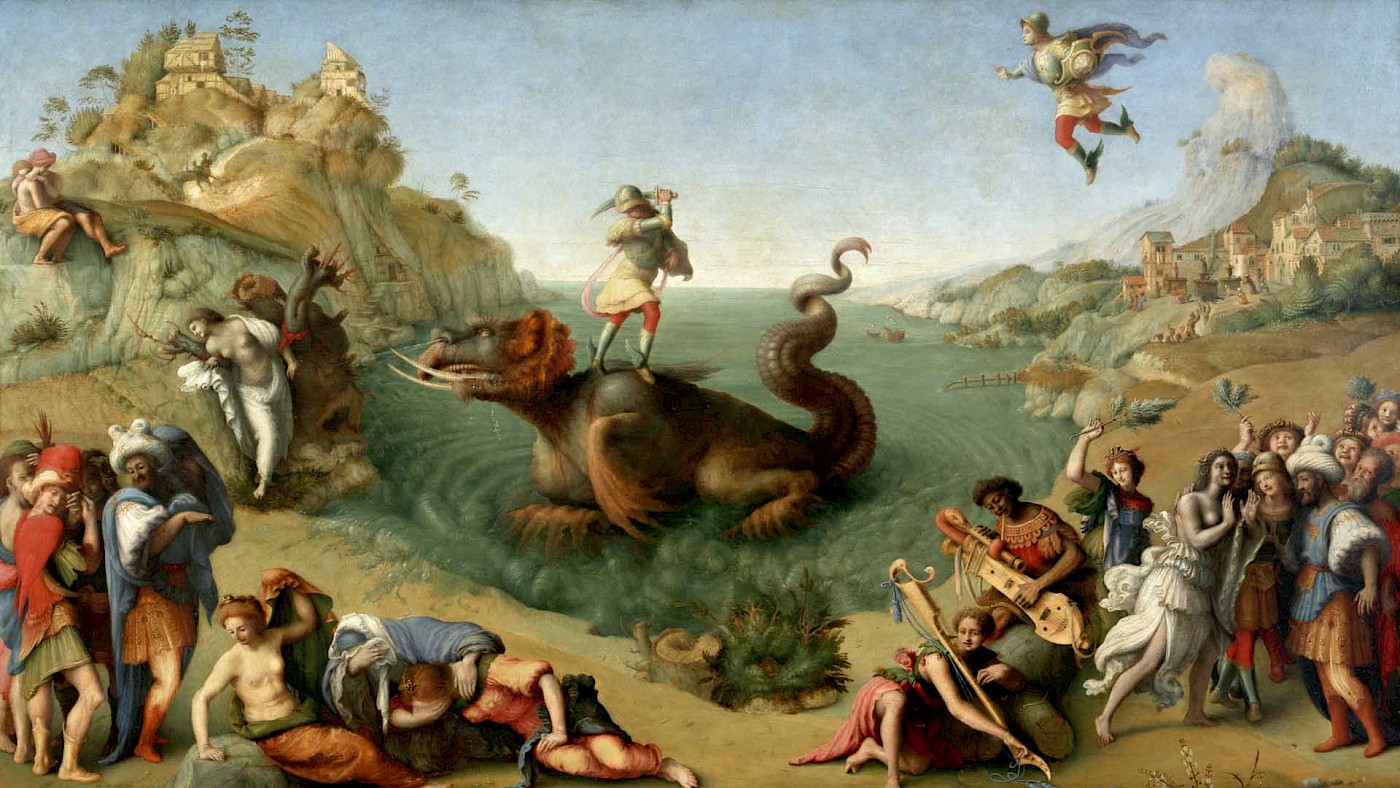In the story of Perseus, his adventures eventually see him travel through either Ethiopia or Levantine Joppa, where he rescued Andromeda from a sea-monster sent by Poseidon after her mother Cassiopeia compared herself to the Nereids. To me, this encounter with Andromeda always felt a bit tacked on. And yet, it’s part of the earliest accounts of the story.
It seems possible to me – though I have no way to be sure – that the story of Perseus is actually a mix of two separate hero stories, perhaps from different regions: in the first, a young hero sets out to defeat the gorgon Medusa, while in the second, the hero rescues a beautiful girl from a terrible monster. At some point, now lost in time, the two were perhaps fused together and the story of Perseus as we are now familiar with it, emerged.
This isn’t too unlikely a scenario. Pherecydes, who was active in the fifth century BC and who summarized Greek myths (and of whom we only possess scraps and summaries of his summaries!), skipped over the adventures with Andromeda completely. As in the episode discussed earlier, Pherecydes has Perseus return immediately to Seriphos after beheading Medusa.
In any event, in those versions where Perseus does end up in Ethiopia (or the Levant) he promises Andromeda’s parents to rescue her in exchange for her hand in marriage. Modern adaptations have Perseus defeat the sea-monster by showing it the decapitated head of Medusa.
This seems imminently logical, and I think that if I were to make an adaptation of the story, I’d probably include this element, too. However, this is not what the ancient Greeks said that he did – at least, not until the fourth century BC. The earliest written sources claim he either killed the monster using a sword or chased it away by throwing rocks. Indeed, the latter is depicted on this Corinthian black-figure vase from around the middle of the sixth century BC (taken from Wikimedia Commons):
Helpfully, the vase-painter labelled all of the figures in the scene: on the left, we see the gigantic ketos or sea-monster, with a rather dog-like snout, emerging from the waves. In the centre is our valiant hero, Perseus (written right-to-left in Corinthian script), and on the right we see Andromeda (her name is again written right-to-left). Her arms are held with the elbows out and we should probably imagine her being tied with her hands behind her back.
Perseus is equipped with wide-brimmed hat (characterstic of travellers), winged sandals, and carrying a pouch, which undoubtedly contains the severed head of the gorgon. But he does not use the gorgon’s head to petrify the monster; instead, he brandishes large rocks, painted white, in his hands. As in the written texts, he is trying to fight or chase off the beast by throwing stones at it. If you look on the ground between Perseus’ legs, you will see that there’s a pile of stones ready to be picked up and thrown.

